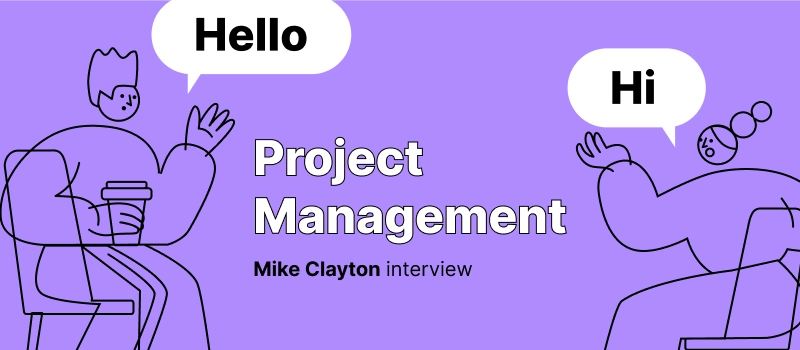
We all know that individuals are super important in any organization, but they really shine when they work together as a team.
And if your team is having a tough time hitting their goals now, you might want to try out a team performance plan.
These plans are a solid way to tackle any issues your crew might be facing. But how do they work, what’s in then, and how do you whip one up without hitting any bumps? Let’s get into it!
What’s a Team Performance Plan and Why Should You Care?
A team performance plan is basically a game plan to boost productivity at work. They are usually developed by team leaders or managers and often get a once-over from HR before they hit the team.
TPPs lay out the team’s goals, roles, responsibilities, and ways you measure success and become the roadmap to the following destinations:
- Alignment: TPP ensures that everyone aims for the same targets.
- Clarity: TPP sets clear expectations for who does what and how success looks.
- Motivation: TPP boosts morale, helping celebrate wins and tackle challenges together.
- Growth: TPP highlights areas where team members can boost their skills.
8 Steps to Creating an Awesome TPP
Alright, so putting together a solid team performance action plan might sound like a big deal, but don’t sweat it! Here’s a simple step-by-step guide to kick things off.
#1 Find Reasons Behind Performance Drop (if Any)
First, consider what’s happening outside your team that might be messing with their performance.
For instance, if you’re constantly pushing your crew to meet crazy client demands, it could make it tough for them to finish their work on time. And if your team seems a bit blah or unmotivated, it could be because you haven’t really connected the dots between the company goals and their daily grind. When they don’t know what’s expected, it’s easy for them to lose motivation.
Scenario to avoid: Pointing fingers
Picture this: your team misses a deadline, and instead of coming together to figure out what went wrong, everyone starts looking for someone to blame. “If only Bob had submitted his report on time!” or “Samantha didn’t communicate the changes!” Sound familiar?
This knee-jerk reaction can feel satisfying in the moment, but it’s like putting a Band-Aid on a broken leg. Sure, it might relieve some stress, but it doesn’t fix the underlying issues.
Antidote: Switching focus
Instead of asking, “Who messed up?” try asking, “What can we do differently next time?” This shifts the focus from blame to improvement.
#2 Define Your Objectives and Goals
The heart of your team performance plan is its objectives. When you nail these down, the team will be able to focus on what really matters and ignore everything that doesn’t.
Start by pinpointing the key goals. Ask yourself:
• What outcomes do we want to achieve?
• How do these fit with the bigger picture and your company targets?
• Are these objectives SMART (Specific, Measurable, Achievable, Relevant, Time-bound)?
Scenario to avoid: Going solo on goals
Just picture this: a manager, let’s call them “Steve,” has just come back from a leadership retreat. Steve is all fired up, armed with a bunch of buzzwords and a shiny new vision. He’s spent hours crafting a list of goals that he thinks will take his team to the next level.
Exciting, right? Well, not really, in case you’re part of this team and you’re left out of the loop!
When the goals are dropped on you like a surprise pop quiz, confusion reigns supreme.
Antidote: Collaborative goal setting
Involve your team in setting objectives to build ownership and commitment.
Brainstorm together, share ideas, and create a vision that everyone can rally behind.
#3 Determine Roles and Responsibilities
When responsibilities are laid out clearly, it cuts down on uncertainties and helps everyone put their best foot forward.
Moreover, when each team member knows how exactly they contribute to the team’s goals, working together becomes way easier.
Use the RACI (Responsible, Accountable, Consulted, Informed) matrix to make things crystal clear and consider the following:
- The tasks each team member owns and the qualifications required to fulfill them
- The details of each task, including the deadline and acceptance criteria
- The availability of support and resources needed to fulfill the tasks
Scenario to avoid: Missed dependencies
In a team setting, we rely on each other’s strengths to fill in the gaps. The designer’s creativity, the developer’s technical skills, and the project manager’s organizational prowess come together to create something spectacular.
… And let’s say the designer misses the mark on a key visual element. The developer, relying on that design, now has to scramble to make adjustments. The project manager is in a panic because deadlines are looming, and suddenly, the whole project feels like it’s teetering on the edge of chaos.
This is where the interconnectedness of the roles can lead to failure.
Antidote: Clear communication
You need to create a culture where checking in with each other is the norm, not the exception, and ensure that all your ‘“orchestra players” are aware of each other’s processes.
#4 Set Performance Metrics
You cannot do without performance metrics in your TPP. Metrics help you keep track of how things are going and where you can step up.
You can use numbers like sales figures or more subjective stuff like customer satisfaction. Just pick the ones that are relevant and easy to track. Think about the following options:
- Key Performance Indicators (KPIs)
- Customer satisfaction scores
- Project completion rates
- Team collaboration indicators
Scenario to avoid: Getting too obsessed with numbers
Imagine your team is chugging along, brainstorming new ideas, and pushing boundaries. Then, suddenly, the boss drops a shiny new KPI on your desk, demanding that everyone shift gears to hit that number. Before you know it, everybody’s attention shifts from collaboration and creativity to cranking out data that fits a mold.
Besides that, when we prioritize KPIs over people, we risk demotivating team members who might not excel in a numbers-driven environment.
Antidote: Balance
It’s all about finding the sweet spot. KPIs can be useful tools, but they shouldn’t be the end-all, be-all.
Focusing on the human aspect of work will lead to a more engaged, innovative, and successful team.
So, let’s keep those numbers in check and remember why we’re all here in the first place: to create, collaborate, and have fun while doing it!
#5 Create Action Plan and Set Timeline
The action plan is a game plan for the team to hit their goals, and the timeline keeps things rolling and makes sure everyone knows when stuff needs to be done.
Break your big goals into smaller, bite-sized milestones and give each one a checklist and a deadline.
This way, you can keep tabs on how things are going and tweak plans if needed.
Scenario to avoid: Being overly optimistic
We’ve all been there. You sit down with your team, brainstorming ideas, and the excitement is palpable. “Let’s launch this project in two weeks!” someone suggests, eyes sparkling with enthusiasm. Everyone nods in agreement, visions of success dancing in their heads.
But as the days roll by, that initial excitement starts to fade faster than your motivation to hit the gym after a long day.
When those overly ambitious deadlines loom, it’s like a ticking time bomb. Team members start to feel the pressure, leading to late nights, frantic emails, and a general sense of chaos. Instead of a collaborative atmosphere, you’ve got a group of stressed-out individuals scrambling to meet an unrealistic timeline.
Antidote: Data-based estimations
Before setting your timeline, take a step back and assess the scope of the project and the time and effort it took to achieve similar goals in the past, consider potential roadblocks, and so on.
#6 Organize Feedback Collection
Regular check-ins are key to keeping your performance plan working. Plus, having open feedback sessions can spark some fresh ideas and drive improvement.
- Set up regular meetings (think daily stand-ups or weekly catch-ups)
- Decide on communication tools (like emails, chats, etc.)
- Lay out how to give feedback and handle any conflicts that arise
Scenario to avoid: Too many communication channels
Jumping between various platforms (like Slack, Trello, Jira, etc.) can confuse everyone. Each tool promises to make our lives easier, but instead, it often feels like we’re stuck in a never-ending loop of notifications and messages.
Antidote: Project management software
Look at the tools your team is using and see if you can streamline. Do you really need three different platforms for chatting? Maybe you can stick to one that features task comments and/or integrates with the messenger you already use.
#7 Establish Review Process
Your performance plan should be a living document that adapts as the team evolves. Regularly check it to see if it’s working and make changes as needed.
This might mean looking at your goals again, redefining roles, or tweaking performance metrics based on what’s happening.
Scenario to avoid: Stagnation
Once you have a performance plan implemented, it’s easy to forget to revisit it, even when it’s overdue.
As a result, your team members feel like running on a hamster wheel and just checking boxes rather than progressing.
Antidote: Open dialogue
Foster innovation! Create a culture where team members feel comfortable suggesting and promoting improvements to processes and metrics.
#8 Consider Development and Growth
When you’re putting together a TPP, make sure to think about how each employee and the whole team can grow. It’s quite natural to introduce new tools, approaches and techniques to boost performance.
You can throw in some training sessions, set up mentorships, and offer workshops to make the tasks easier to complete and the goals easier to achieve.
Scenario to avoid: Resistance to change
When you try to shake things up with new methods, some team members might push back because they like how things are.
This resistance often manifests in subtle ways: grumbling in meetings, side-eyeing new initiatives, or even passive-aggressive behaviors.
When one team member digs their heels in, it can create a ripple effect, turning the whole crew into a bunch of reluctant individuals.
Antidote: Unity
By collectively facing the challenges that change brings, your team can evolve into a more resilient, adaptable unit.
Here’s a little mantra to keep in mind: “We’re in this together.”
Find ways to celebrate small wins along the way and recognize team members who embrace change.
Implementing Team Performance Plan With actiTIME
So there you have it, folks: the eight steps to a killer team performance plan are already in your pocket! Now, it’s time to see how to make it work.
Of course, we’ve got a tool for it, actiTIME is the ultimate time and project management tool that will come in handy at almost every stage.
- Get everyone on the same page. Create and assign tasks and visualize project timelines to avoid overlapping responsibilities and missed dependencies.
- Communicate within task cards. Add detailed descriptions and comments to ensure nothing is lost.
- Track time and progress. Easily monitor how much time is or was spent on various tasks and how much more is needed to complete it.
- Learn from the past. Dive deep into past performance and use those insights to refine your goals and set reasonable deadlines.
- Integrate. Use Zapier to connect to your favorite tools and spend less time switching between apps and more on delivering stellar results.

So, roll up your sleeves, get your team together, and start building a performance plan that sets everyone up for success with an actiTIME free trial!


















































